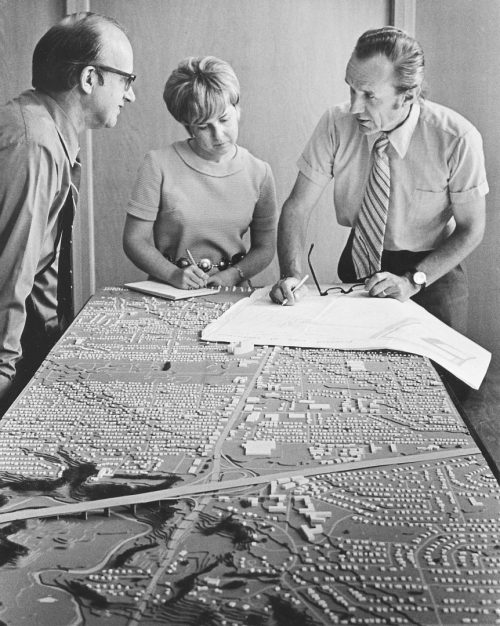
A century ago in June 1922, residents of the northern portion of the Township of York demanded their own municipality to better represent their interests. Carved out of the larger entity surrounding Toronto, the new Township of North York was a mostly rural territory with a few disconnected communities such as Emery, Downsview, Newtonbrook, and Kingsdale, that began as milling villages, were situated at crossroads or along Yonge Street, or were concentrated agricultural settlements.
Having as its motto “Progress with Economy,” North York’s initial growth spurt in both population and municipal services would be stalled subsequently by the Great Depression and the Second World War, only to recover and leave a lasting built testimony to the three decades of unprecedented postwar prosperity that prevailed throughout much of North America.
Having plentiful land, North York offered space for its growing population – a product of the “baby boom” and the arrival of many new Canadians. This conglomerate of small communities was soon bound together through urban planning, the proliferation of the automobile and the corresponding expansion of road and later transit infrastructure. New housing, both high-density and detached dwellings, spread out across the township, as did corporate headquarters and factories, shopping malls, schools, places of worship, playgrounds, tourist attractions and community centres.

Becoming a borough in 1967 and a city a dozen years later, North York developed its own identity as “The City with Heart” complete with its own downtown, even as it maintained its numerous economically and culturally diverse neighbourhoods and communities. Mel Lastman was a symbol of North York’s success. Serving as its mayor for 25 years, his longevity and high profile made him the people’s choice for the first mayor of the amalgamated “megacity” of Toronto. The community of North York continues to play a central role in our city today.
We acknowledge the land in this exhibit is the traditional territory of many nations including the the Mississaugas of the Credit, the Anishnabeg, the Chippewa, the Haudenosaunee and the Wendat people and is now home to many diverse First Nations, Inuit and Metis peoples. We also acknowledge that Toronto is covered by Treaty 13 with the Mississaugas of the Credit.